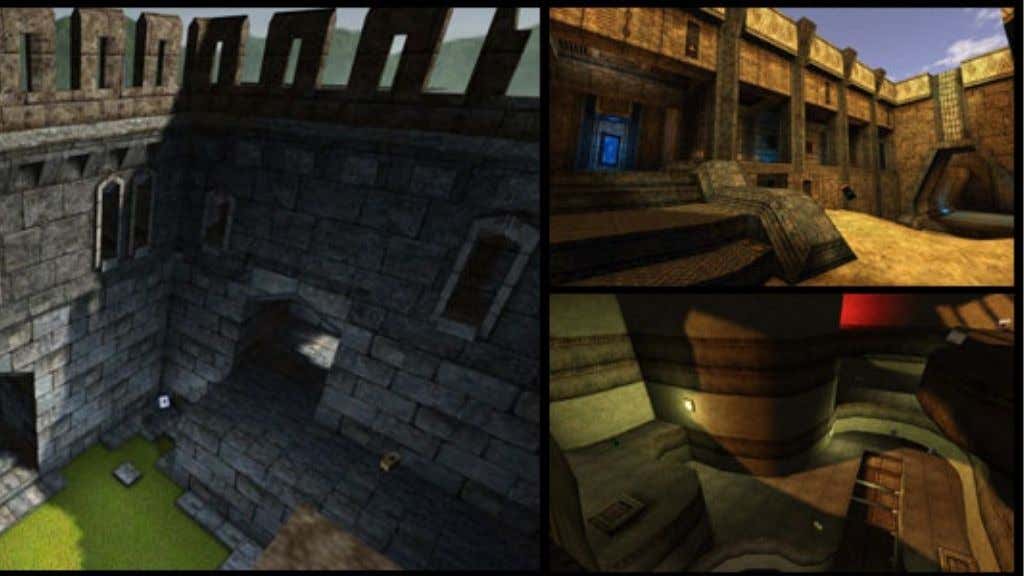Open Source software is usually associated with “boring” stuff like Linux or free office suites. Still, there’s a thriving Open Source video game community filling a niche that neither Indie nor big studio games can fill. While Open Source games tend to be humble in production value, they are often limitless in scope. If you’re a true video game enthusiast, you should give these titles a look.
1. The Battle for Wesnoth
This turn-based high-fantasy strategy game takes you to the world of Wesnoth. The game looks as polished as anything you’d get from a traditional publisher in this genre, and the amount of content is staggering. There are 17 official single-player campaigns to plow through, and that’s before you get to the user-made content.
As for the gameplay itself, Wesnoth sports over 200 unit types, spread across seven factions. So whether you want to play by yourself or take part in massive multiplayer battles, the Battle for Wesnoth has what you need.
2. 0 A.D.
If you loved games like Age of Empires, then prepare to be blown away by 0 A.D. This gorgeous real-time strategy game centers around ancient warfare. The game is (at the time of writing) in its 25th alpha release, but don’t let that put you off. It’s already in playable shape. It’s hard to imagine that a global group of volunteer developers has put together such a cohesive game.
The game has exquisite detail, with unique looks for every culture and faction. It has interesting mechanics, such as getting combat bonuses if you use real historical combat formations. Maps are based on actual geography, historical details are included with an eye toward accuracy, and there are big plans in the future for naval warfare too!
3. CUBE 2: Sauerbraten
Sauerbraten is a Quake-like shooter that you can play by yourself or against other players. It’s not the prettiest game around, but there’s a good reason for that. The philosophy behind the game is to make it possible for the level editor to work in real-time. Therefore, the in-game graphics are always simple enough to allow for this ability to change the look and feel of the game.
Letting the community easily create levels makes Sauerbraten unique, and you’ll find real gems within the selection. The map editor is actually in the game itself, so you have no reason not to try your hand at making the following hit map for the game.
4. Red Eclipse
Red Eclipse is a fork of Sauerbraten that reimagines the gameplay of the original to include parkour mechanics. You still have the in-game level editor, but Red Eclipse offers improved visuals and a closer feel to Quake III Arena. The developers specifically describe it as an “Arena shooter featuring parkour.” So if that sounds appealing to you, give Red Eclipse a try.
5. SuperTuxCart
Who doesn’t love Mario Kart? It has spawned many imitators on other platforms, but most people don’t know that there’s a brilliant Open Source take on the kart-racing formula.
“Tux” refers to the Linux penguin mascot who takes his place among other mascots in the game’s Mascot Kingdom setting. There’s a whole story about a villain named Nolok and many different characters, each a mascot for an Open Source project.
SuperTuxCart isn’t a Mario Kart clone, as the developers are quick to point out, so it’s worth playing for Mario Kart veterans looking for something different.
6. Cataclysm: Dark Days Ahead
Cataclysm is an old-school roguelike game where you find yourself in the post-apocalypse with nothing but the shirt on your back. Your goal is to survive for as long as possible.
Everything seems to be working against your bid for survival, but with luck and smarts, you might just keep breathing for another turn. While the graphics are basic, the story’s depth pales even the biggest-budget titles.
7. FreeOrion
Master of Orion and its sequel are one of the best and most important “4X” strategy games ever made. To this day, they remain amazing games worth playing, and you can still buy them on GoG.com!
FreeOrion isn’t a remake or a clone of those games, but it builds on the same design and premise. You are the leader of an alien race (which may happen to be human). You need to expand your empire by exploring the galaxy, improving your economy and technology, and conquering planets and other races.
At the time of writing, the diplomacy options in FreeOrion are still basic, but in time it might equal other 4X games. However, you should have no qualms booting up this epic space title unless you wanted to be a complete pacifist.
8. FlightGear
Microsoft’s Flight Simulator might be cheap, thanks to Game Pass, but there’s still plenty of reasons to give FlightGear a try. The community is constantly working to improve the sim model and add more aircraft and other content. Yes, technically, pure flight simulators are not games, but we thought it would be a shame to let FlightGear fly under the radar for this article. Pun totally intended.
There’s not too much to say here since it’s a flight simulator, but if you’re a sim junkie, this should be in your collection.
9. Pioneer
Who can forget the wonder of loading the original Elite by David Braben? While those wireframe graphics might look silly today, at the time, it was amazing that you could fly through space, explore planets while trading and fighting in your ship.
Today, Braben’s latest title Elite Dangerous is still a banger and an essential VR game to boot. However, many people still consider Frontier: Elite II to be the pinnacle of the series.
Pioneer is inspired by that game and aims to bottle the same lightning again in a free and Open Source form.
Pioneer has no set goal; you can do what you want, make money through trade, piracy, or as a mercenary for hire. It uses accurate space flight physics, at least when it comes to conventional space flight. It even uses basic atmospheric drag physics when you land on a planet. While not nearly as beautiful as Elite Dangerous, Pioneer is pleasing to the eye in its own right.
10. FreeCiv
The Civilization series of turn-based strategy games are alive and well, but people feel that the modern games have strayed a little too far from what made the original games so compelling. We love the latest Civ games, but FreeCiv does bring some of that old-school charm back for one more turn. Okay, maybe just one more.
Are there any open-source video games you are looking forward to that we didn’t mention here? Feel free to let us know in the comments!










